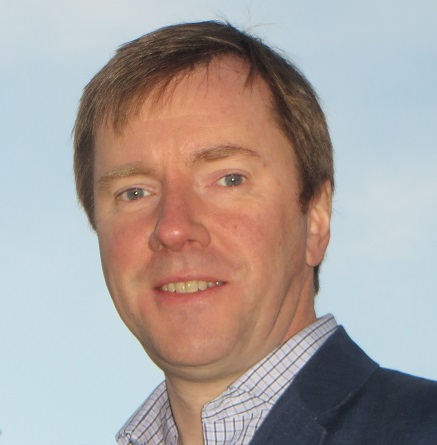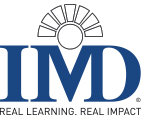- Leadership
Mindsets for Change
IMD’S Robert Hooijberg discusses how to develop mindsets for enabling organizational change
The job of senior leaders is to be both looking up and looking down simultaneously. They need to be scanning the horizon for new opportunities and also threats, and at the same time they need to understand what is going on internally in the organization, how it is working and what needs fixing.
For many executives who have been working for a couple of decades it can be very difficult to escape the mindsets their roles thus far have required of them.
The challenge for most people who are moving into more senior management roles is that their work experience is most likely to have been with varying degrees of downward inspection. It is the reality of most careers that you start to specialise and focus-in more expertly on your chosen field, before suddenly finding yourself promoted to a position that requires a quite different perspective: to look up and out, rather than down and in.
What Changes Can You Bring?
Robert Hooijberg is a professor of Organizational Behaviour at IMD. Since 2018 he has been running the Swiss business school’s long-standing ‘Breakthrough Program for Senior Executives’.
Hooijberg is clear that for many executives who have been working for a couple of decades it can be very difficult to escape the mindsets their roles thus far have required of them, and transition to broader perspective thinking. “If you’ve been pursuing your career for 20 or 25 years, you acquire very deep knowledge of your company and your industry. That is fantastic for running the business, but it’s not necessarily something that helps you to really think through what changes you can bring,” he observes.
…………………………………………………………………………………………………………
Join Professor Robert Hooijberg on IMD’s ‘Breakthrough Program for Senior Executives’
Dates: 26 Nov–05 Dec; 24 Mar–02 Apr; 01–10 Sept │ Format: In-class study
Location: Lausanne, Switzerland
…………………………………………………………………………………………………………
For Hooijberg a large part of the required ‘breakthrough thinking’ is in getting the executives to realise that when they look ‘up’, they must do so with more than just their old eyes. When executives identify opportunities to support and accelerate change, they often over-focus on the hard, technical aspects and have little focus on the fuzzier, people-oriented ones. This is, of course, a frequent reason for M&A failures: the numbers work but culture integration does not.
Getting the executives to realise that when they look ‘up’, they must do so with more than just their old eyes
Hooijberg explains “My favourite example is Enterprise Resource Planning processes like Systems Applications and Processes. When we introduce them, we focus on the technology and what it can bring and then we are surprised that we don’t get the benefits that we were promised. What we leave out of the equation is that when you start with these new systems it brings new ways of connecting people, it brings changes in the power structure, it brings changes in jobs. So, if you don’t think through what breakthrough needs to happen at the individual level, you’re inevitably not going to get the power of the breakthrough that you were hoping for at the organizational level.”
Reducing Value of Functional and Business Knowledge
To turn this situation around, Hooijberg asks executives to start thinking about change from the individual perspective. He does this by posing a ‘painful question’ to these successful managers, namely, “What would be left of your leadership if I take your functional and your business knowledge/competencies away?” As Hooijberg explains, “It’s hard because as a senior executive you’ve made your career on the basis of your functional and business competencies and your knowledge. But the more senior you get the less relevant your specific knowledge of a particular part of the businesses is, and you have to be able to have an impact beyond those concepts.”
The initial breakthrough in mindset is that the role of the senior leader should be much more about the executives’ ability to enable people to deploy their full potential in their organization, rather than being the expert or the generator of new ideas. Hooijberg promotes that the best leaders in these situations need to create environments where their team can explore new concepts and processes without fear of ridicule. Engendering the mindset of curiosity, where new advances, technologies and systems are being explored will inevitably lead to new ideas and processes being surfaced.
This also allows teams to be bolder in their change plans. Looking again at the Systems Applications and Processes example, he comments, “We try to bring in organizational solutions that are too narrow-minded in their approach because they didn’t take into full account the impact those technological changes will have on power structure, hierarchy, competency, lateral relations, vertical relations, or silo relations. I want these guys and gals to really feel empowered to rethink that, so that the next time they have an opportunity for a big change.”
Individual Focus Brings Organizational Benefits
Through this process Hooijberg sees the initial focus on the individual quickly evolving to include the whole team, and that allows them to make changes that can positively benefit the whole organization. Though starting with the individual executive, the impact can be truly organizational.
Hooijberg also sees how this approach can transform strategy identification. Often it is left to consultants to aid the strategy process. These consultants then frequently leave before the hard work of implementation. He believes that if you bring your own people in with this curious, people- focused mindset at the start, then get them to create the strategy – they are going to be far more passionate about implementing the strategy than if it has been parachuted in from the outside. And they are going to understand it much better too.
Hooijberg uses this approach in his program. He specifically asks participants not to come with an action plan. Typically, in an executive program like this one, participants will arrive with an action plan, and sometimes that action plan may well have been given to them by their organization – so already they do not ‘own it’. In Hooijberg’s program, they spend the final day on their action plan, but it is one that means something to them, based upon the thinking and ideas that have emerged over the first part of the program.
He ties this back to the ‘painful question’ posed earlier. “If you have your functional and business knowledge removed – what does that leave you with? If you take a step back from that, I think you’re more open to learning new things because you realize you can draw on the connections and the power and the knowledge of those around you to create new ways of doing business, new products, new markets, new services and new business models.”
IMD is a top-ranked business school, expert in developing leaders, transforming organizations and creating immediate and long-term positive impact.
ARTICLES YOU MIGHT LIKE
RESEARCH
Why organizational resilience requires adaptive leadership particularly in times of crisis
DEVELOPING LEADERS QUARTERLY MAGAZINE AND WEEKLY BRIEFING EMAILS


































